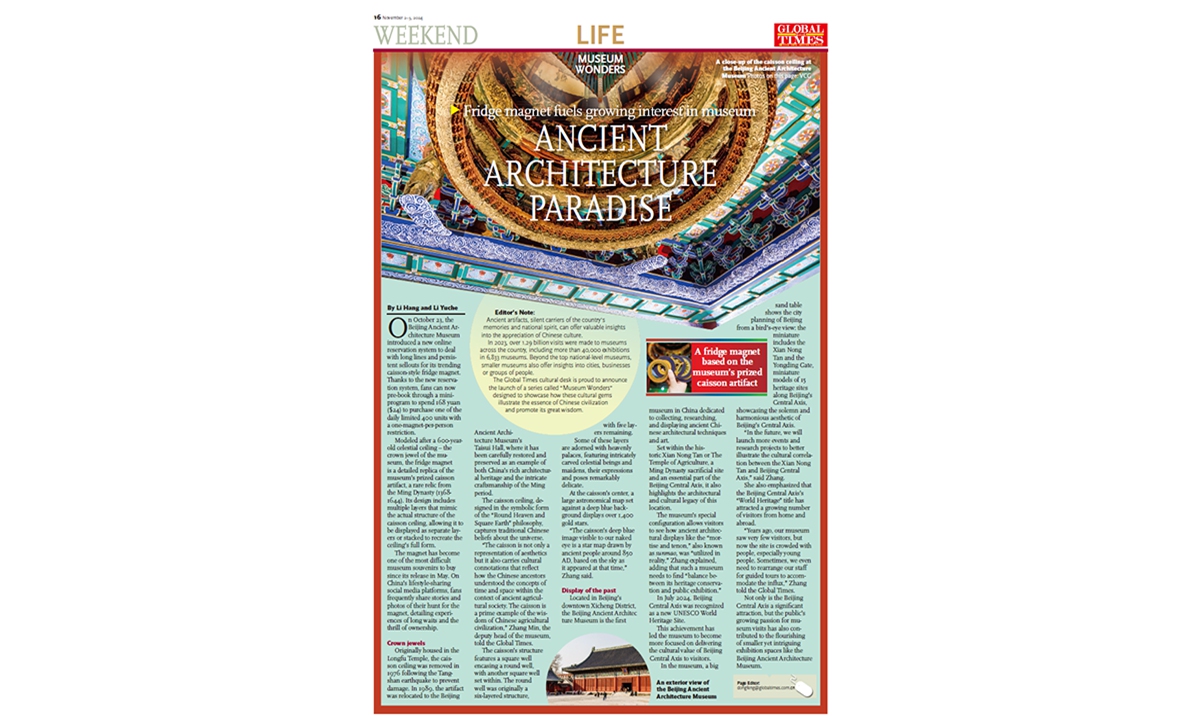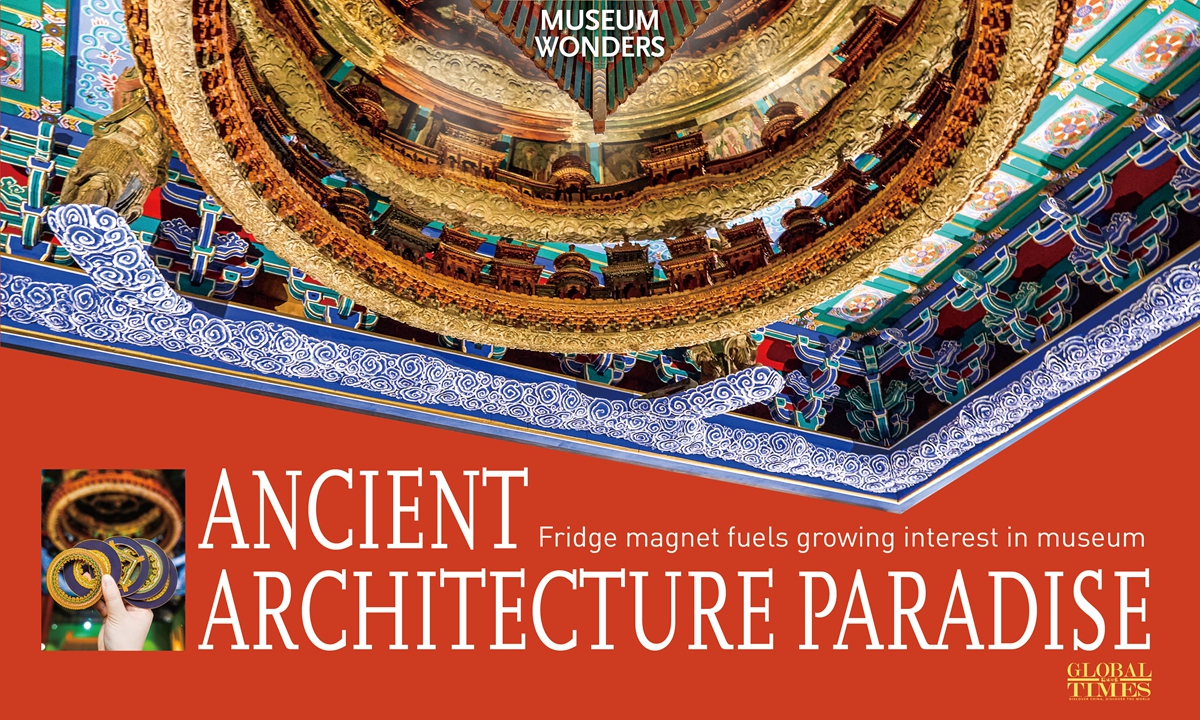Editor's Note:
Ancient artifacts, silent carriers of the country's memories and national spirit, can offer valuable insights into the appreciation of Chinese culture.
In 2023, over 1.29 billion visits were made to museums across the country, including more than 40,000 exhibitions in 6,833 museums. Beyond the top national-level museums, smaller museums also offer insights into cities, businesses or groups of people.
The Global Times cultural desk is proud to announce the launch of a series called "Museum Wonders" designed to showcase how these cultural gems illustrate the essence of Chinese civilization and promote its great wisdom.
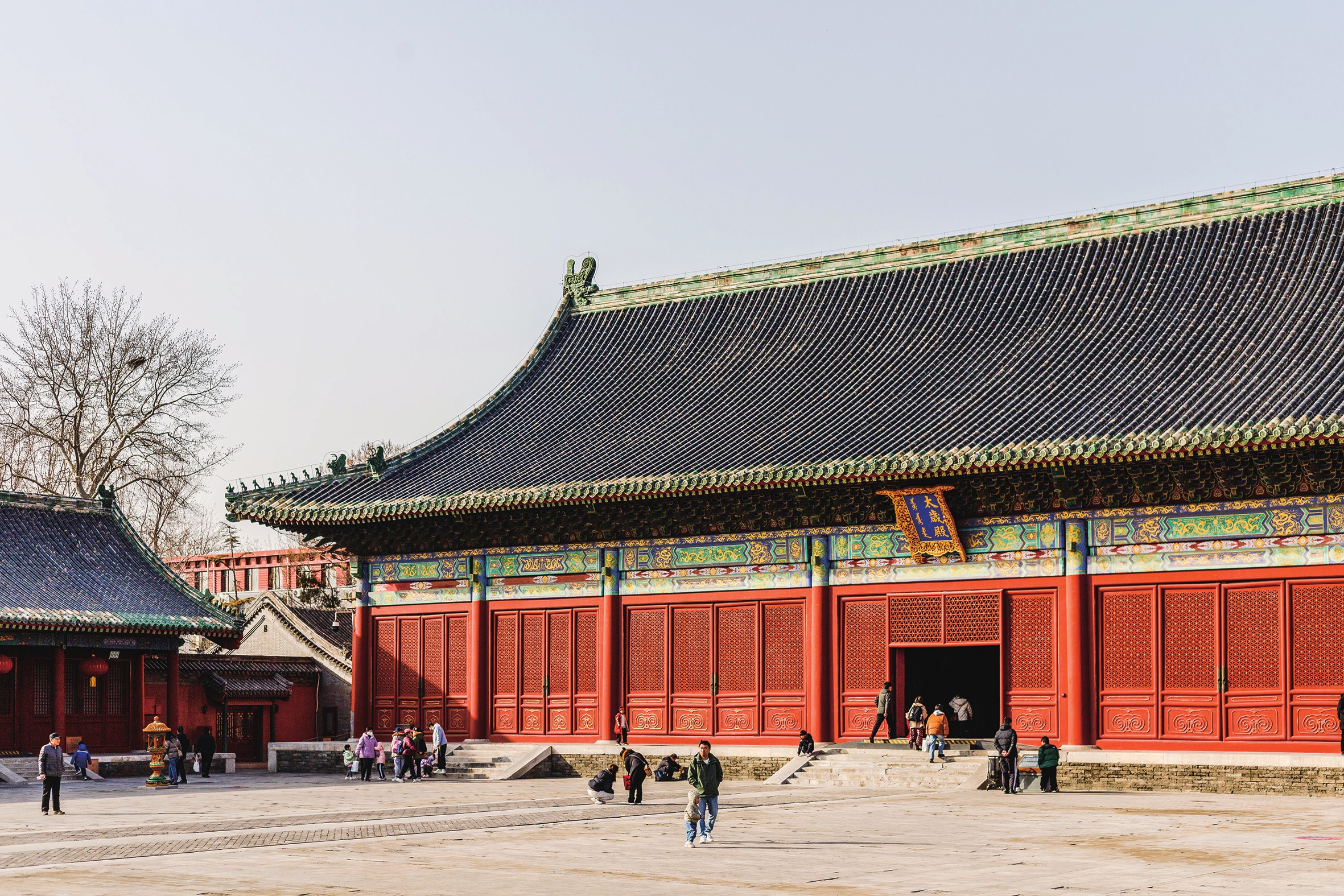
An exterior view of the Beijing Ancient Architecture Museum Photo: VCG
On October 23, the Beijing Ancient Architecture Museum introduced a new online reservation system to deal with long lines and persistent sellouts for its trending caisson-style fridge magnet. Thanks to the new reservation system, fans can now pre-book through a mini-program to spend 168 yuan ($24) to purchase one of the daily limited 400 units with a one-magnet-per-person restriction.
Modeled after a 600-year-old celestial ceiling - the crown jewel of the museum, the fridge magnet is a detailed replica of the museum's prized caisson artifact, a rare relic from the Ming Dynasty (1368-1644). Its design includes multiple layers that mimic the actual structure of the caisson ceiling, allowing it to be displayed as separate layers or stacked to recreate the ceiling's full form.
The magnet has become one of the most difficult museum souvenirs to buy since its release in May. On China's lifestyle-sharing social media platforms, fans frequently share stories and photos of their hunt for the magnet, detailing experiences of long waits and the thrill of ownership.
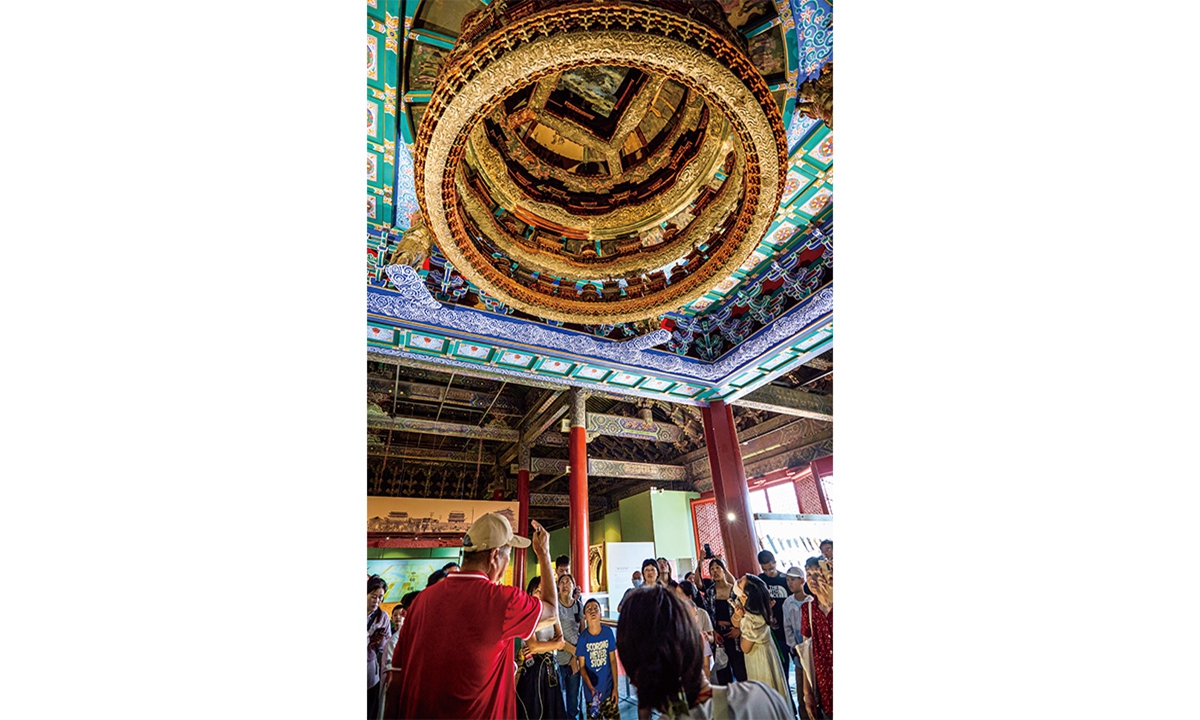
A close-up of the caisson ceiling at the Beijing Ancient Architecture Museum Photo: VCG
Crown jewelsOriginally housed in the Longfu Temple, the caisson ceiling was removed in 1976 following the Tangshan earthquake to prevent damage. In 1989, the artifact was relocated to the Beijing Ancient Architecture Museum's Taisui Hall, where it has been carefully restored and preserved as an example of both China's rich architectural heritage and the intricate craftsmanship of the Ming period.
The caisson ceiling, designed in the symbolic form of the "Round Heaven and Square Earth" philosophy, captures traditional Chinese beliefs about the universe.
"The caisson is not only a representation of aesthetics but it also carries cultural connotations that reflect how the Chinese ancestors understood the concepts of time and space within the context of ancient agricultural society. The caisson is a prime example of the wisdom of Chinese agricultural civilization," Zhang Min, the deputy head of the museum, told the Global Times.
The caisson's structure features a square well encasing a round well, with another square well set within. The round well was originally a six-layered structure, with five layers remaining. Some of these layers are adorned with heavenly palaces, featuring intricately carved celestial beings and maidens, their expressions and poses remarkably delicate.
At the caisson's center, a large astronomical map set against a deep blue background displays over 1,400 gold stars.
"The caisson's deep blue image visible to our naked eye is a star map drawn by ancient people around 850 AD, based on the sky as it appeared at that time," Zhang said.
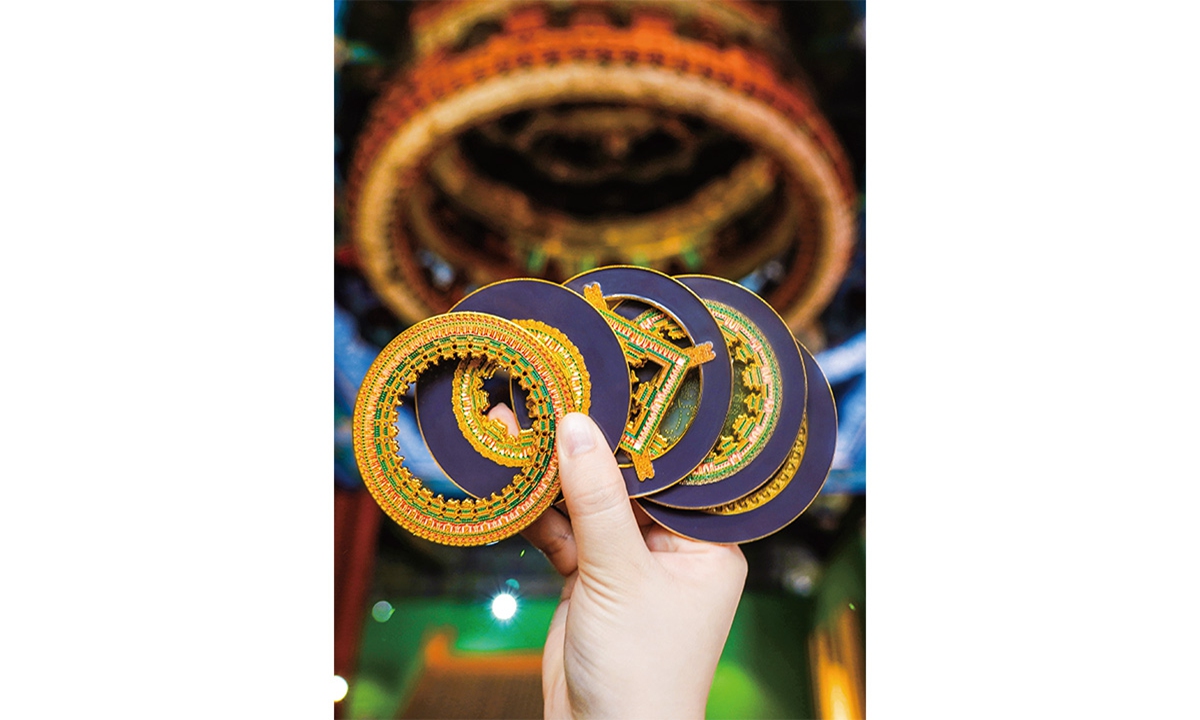
A fridge magnet based on the museum's prized caisson artifact Photo: Courtesy of the Beijing Ancient Architecture Museum
Display of the past
Located in Beijing's downtown Xicheng District, the Beijing Ancient Architecture Museum is the first museum in China dedicated to collecting, researching, and displaying ancient Chinese architectural techniques and art.
Set within the historic Xian Nong Tan or The Temple of Agriculture, a Ming Dynasty sacrificial site and an essential part of the Beijing Central Axis, it also highlights the architectural and cultural legacy of this location.
The museum's special configuration allows visitors to see how ancient architectural displays like the "mortise and tenon," also known as
sunmao, was "utilized in reality," Zhang explained, adding that such a museum needs to find "balance between its heritage conservation and public exhibition."
In July 2024, Beijing Central Axis was recognized as a new UNESCO World Heritage Site.
This achievement has led the museum to become more focused on delivering the cultural value of Beijing Central Axis to visitors.
In the museum, a big sand table shows the city planning of Beijing from a bird's-eye view: the miniature includes the Xian Nong Tan and the Yongding Gate, miniature models of 15 heritage sites along Beijing's Central Axis, showcasing the solemn and harmonious aesthetic of Beijing's Central Axis.
"In the future, we will launch more events and research projects to better illustrate the cultural correlation between the Xian Nong Tan and Beijing Central Axis," said Zhang.
She also emphasized that the Beijing Central Axis's "World Heritage" title has attracted a growing number of visitors from home and abroad.
"Years ago, our museum saw very few visitors, but now the site is crowded with people, especially young people. Sometimes, we even need to rearrange our staff for guided tours to accommodate the influx," Zhang told the Global Times.
Not only is the Beijing Central Axis a significant attraction, but the public's growing passion for museum visits has also contributed to the flourishing of smaller yet intriguing exhibition spaces like the Beijing Ancient Architecture Museum.
